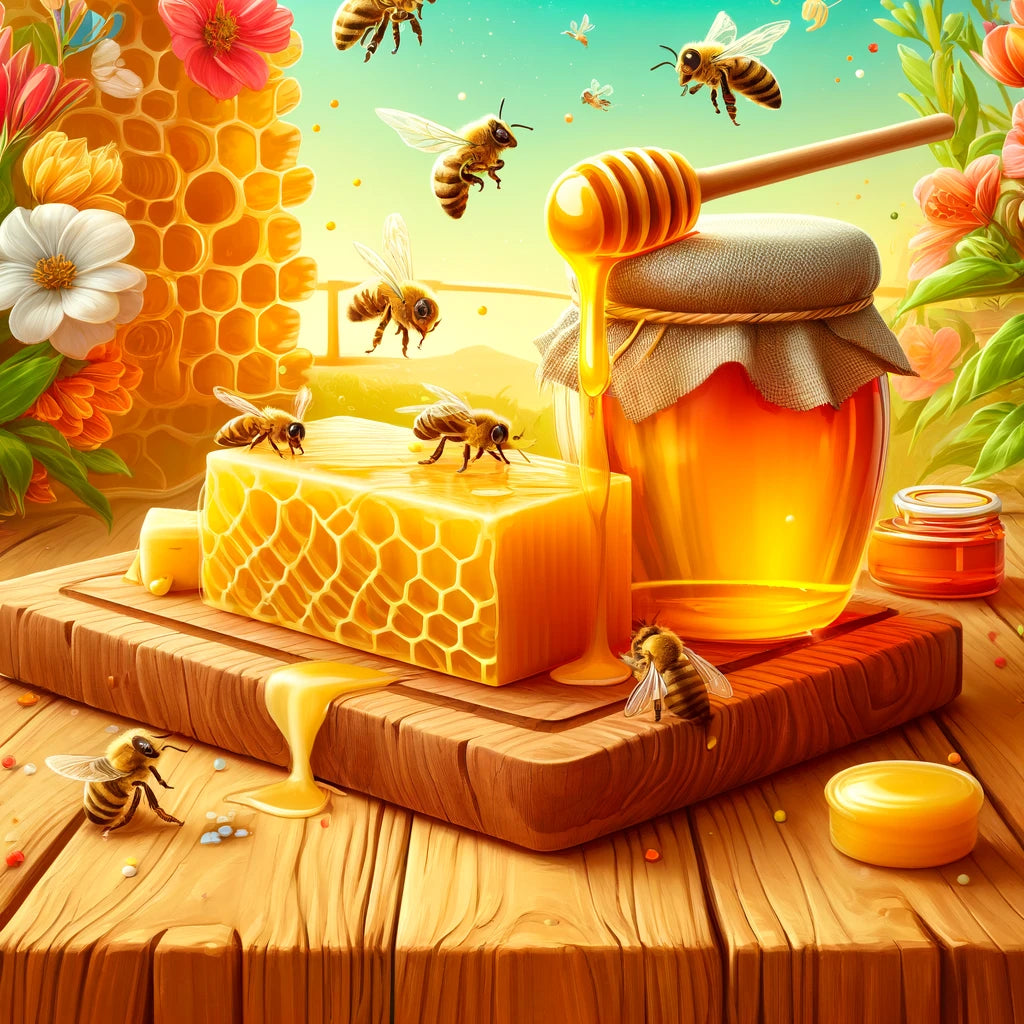Call (803) 754-7577

How To Separate Beeswax From Honey
Beekeeping is a rewarding hobby and an essential part of agriculture, not only for producing honey but also for beeswax candles, a valuable byproduct. Beeswax, known for its versatile applications in candles, cosmetics, and household products, requires careful separation from honey. This article explores the nuanced process of extracting beeswax from honey, its methodology, and the benefits of this natural substance.
Understanding the Basics
Honeybees produce wax to build their combs, store honey and pollen, and raise their brood. When beekeepers harvest honey, they also gather beeswax, which comes from the caps bees make to seal honey into the cells of the comb. Separating these two products involves a series of steps, each requiring patience and care to ensure the purity and quality of both honey and beeswax.
Honey Extraction
The separation process begins with the extraction of honey, which can be done using different methods depending on the type of hive and the beekeeper's preference.
- Uncapping and Extracting: The first step involves removing the wax caps from the honeycomb cells, a process known as uncapping. Beekeepers use a heated knife, an uncapping fork, or a specialized machine to expose the honey. Following uncapping, the combs are placed in a honey extractor, a centrifuge that spins the honey out of the cells while leaving the comb intact.
- Crushing and Straining: Beekeepers often use the crush and strain method for combs not built on wire or plastic foundations, such as those from top-bar hives. This involves crushing the comb to release the honey and then straining it through a mesh to separate it from the wax pieces.
Settling Honey
Once extracted, the honey may contain wax particles, bee parts, and other debris. It is left to settle, allowing impurities to float to the surface or sink to the bottom. The clean honey is drawn from the middle, leaving the wax and heavier particles behind.
Separating Beeswax
The wax collected from the uncapping, extracting, and straining processes is then purified further. This involves melting the wax, often in water, to separate it from any remaining honey and impurities. As beeswax is lighter than water, it floats to the surface, solidifying as it cools and allows accessible collection.
Rendering Beeswax
Rendering is the final step in purifying beeswax. The collected wax is melted again, this time filtered through cheesecloth or a fine mesh to remove any remaining debris. The clean, liquid beeswax is then poured into molds to solidify. This process can be repeated as necessary to achieve the desired purity level.
Uses for Beeswax
Beeswax is prized for its versatility. Here are some of the most common uses:
- Candles: Beeswax candles burn cleaner and longer than paraffin-based candles, releasing a natural, sweet fragrance without adding scents.
- Cosmetics and Skincare: Beeswax is a natural emulsifier used in lip balms, lotions, and makeup for its moisturizing and protective qualities.
- Wood and Leather Care: Beeswax provides a natural polish for wood and leather, offering protection and a pleasant sheen.
- Cooking and Food Storage: Beeswax wraps are an eco-friendly alternative to plastic cling film for wrapping and storing food.
Health Benefits of Beeswax
Beyond its practical applications, beeswax offers several health benefits:
- Cholesterol Management: Certain studies suggest that beeswax can help lower bad LDL cholesterol and increase good HDL cholesterol.
- Anti-inflammatory Properties: Beeswax has been used in traditional medicines to treat inflammation and joint pain.
- Skin Health: The vitamin A content in beeswax supports cell reconstruction and hydration, making it beneficial for treating acne, eczema, and dry skin.
Sustainable Beekeeping
Separating beeswax from honey is just one aspect of beekeeping, a practice that supports biodiversity and helps maintain healthy ecosystems. By producing beeswax, beekeepers contribute to a sustainable cycle of production that benefits the environment, the economy, and the community.
Conclusion
Separating beeswax from honey is both an art and a science, requiring knowledge, skill, and patience. Whether for personal use, sale, or simply the satisfaction of mastering an ancient craft, beeswax extraction offers a rewarding experience for beekeepers. The products derived from beeswax serve as a testament to the incredible work of honeybees and the careful stewardship of those who tend them. As we discover new uses for this remarkable substance, the relationship between humans and honeybees remains vital to our environment.
Frequently Asked Questions About Beeswax Separation
- Can beeswax and honey be separated without special equipment?
Yes, using the crush and strain method, beeswax can be separated from honey without specialized equipment. This involves manually crushing the honeycomb and straining the mixture through a mesh to separate the honey from the beeswax. However, equipment like a honey extractor and wax melter can be beneficial for larger quantities or more efficient processing.
- How long does it take for beeswax to separate from honey?
The time it takes for beeswax to separate from honey can vary depending on the method used. The settling process for honey can take several hours to a day to allow wax and impurities to float to the surface. Rendering beeswax to purify it further can take a few hours, including melting, filtering, and cooling time.
- Is there a best time of year to separate beeswax from honey?
The best time to separate beeswax from honey is usually after the honey harvest, which occurs in late summer or early fall for most climates. This timing ensures that bees have had the season to produce honey and wax and that beekeepers can extract these products before preparing the hives for winter.


Leave a comment